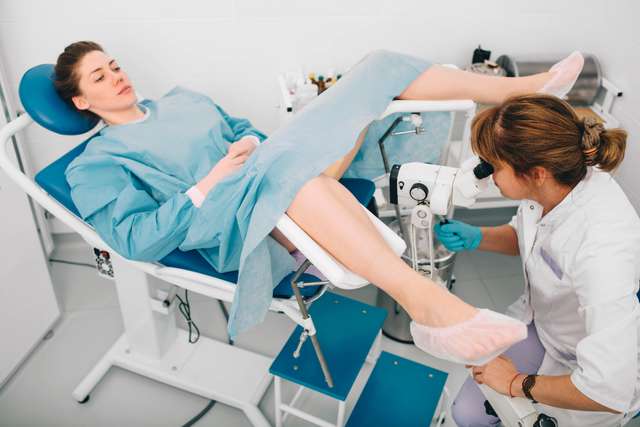What Lantus contains
- The active substance is insulin glargine. Each millilitre of the solution contains 100 units of the active substance insulin glargine (equivalent to 3.64 mg).
- Other ingredients of Lantus are: zinc chloride, m-cresol, glycerol, sodium hydroxide, hydrochloric acid and water for injections.
What Lantus looks like and contents of the pack
Lantus SoloStar 100 units/ml solution for injection in a pre-filled pen, is a clear and colourless solution.
Each pencontains 3 ml of solution for injection (equivalent to 300 units). Packs of 1, 3, 4, 5, 6, 8, 9 and 10 pre-filled pens of 3 ml are available. Not all pack sizes may be marketed.
Marketing Authorisation Holder and Manufacturer
Marketing Authorization Holder
Sanofi-Aventis Deutschland GmbH, D-65926 Frankfurt am Main, Germany.
Manufacturer
Sanofi-Aventis Deutschland GmbH,
D-65926 Frankfurt am Main,
Germany.
Aventis Pharma (Sanofi-aventis group)
Rainham Road South
Dagenham, Essex RM10 7XS
United Kingdom
For any information about this medicine, please contact the local representative of the Marketing Authorisation Holder.
BelgiëBelgiqueBelgien sanofi-aventis Belgium TélTel 32 02 710 54 00 LuxembourgLuxemburg sanofi-aventis Belgium TélTel 32 02 710 54 00 BelgiqueBelgien
sanofi-aventis Bulgaria EOOD . 359 02 970 53 00 Magyarország sanofi-aventis zrt., Magyarország Tel. 36 1 505 0050
eská republika sanofi-aventis, s.r.o. Tel 420 233 086 111 Malta sanofi-aventis Malta Ltd. Tel 356 21493022
Danmark sanofi-aventis Denmark AS Tlf 45 45 16 70 00 Nederland sanofi-aventis Netherlands B.V. Tel 31 0182 557 755
Deutschland Sanofi-Aventis Deutschland GmbH Tel 49 0180 2 222010 Norge sanofi-aventis Norge AS Tlf 47 67 10 71 00
Eesti sanofi-aventis Estonia OÜ Tel 372 627 34 88 Österreich sanofi-aventis GmbH Tel 43 1 80 185 0
sanofi-aventis AEBE 30 210 900 16 00 Polska sanofi-aventis Sp. z o.o. Tel. 48 22 280 00 00
España sanofi-aventis, S.A Tel 34 93 485 94 00 Portugal sanofi-aventis - Produtos Farmacêuticos, Lda. Tel 351 21 35 89 400
România sanofi-aventis România S.R.L. Tel 40 0 21 317 31 36 France sanofi-aventis France Tél 0 800 222 555 Appel depuis létranger 33 1 57 63 23 23
Ireland sanofi-aventis Ireland Ltd. Tel 353 0 1 403 56 00 Slovenija sanofi-aventis d.o.o. Tel 386 1 560 48 00
Ísland Vistor hf. Sími 354 535 7000 Slovenská republika sanofi-aventis Pharma Slovakia s.r.o. Tel 421 2 33 100 100
Italia sanofi-aventis S.p.A. Tel 800 13 12 12 domande di tipo tecnico SuomiFinland sanofi-aventis Oy PuhTel 358 0 201 200 300 39 02 393 91 altre domande e chiamate dallestero
sanofi-aventis Cyprus Ltd. 357 22 871600 Sverige sanofi-aventis AB Tel 46 08 634 50 00
Latvija sanofi-aventis Latvia SIA Tel 371 67 33 24 51 United Kingdom sanofi-aventis Tel 44 0 1483 505 515
Lietuva
UAB sanofi-aventis Lietuva
Tel: +370 5 2755224
This leaflet was last approved on
HYPERGLYCAEMIA AND HYPOGLYCAEMIA
Always carry some sugar (at least 20 grams) with you.
Carry some information with you to show you are diabetic.
HYPERGLYCAEMIA (high blood sugar levels)
If your blood sugar is too high (hyperglycaemia), you may not have injected enough insulin.
Why does hyperglycaemia occur?
Examples include:
- you have not injected your insulin or not injected enough, or if it has become less effective,for example through incorrect storage,
- your insulin pen does not work properly,
- you are doing less exercise than usual, you are under stress (emotional distress, excitement), or you have an injury, operation, infection or fever,
- you are taking or have taken certain other medicines (see section 2, "Using other medicines").
Warning symptoms of hyperglycaemia
Thirst, increased need to urinate, tiredness, dry skin, reddening of the face, loss of appetite, low blood pressure, fast heart beat, and glucose and ketone bodies in urine . Stomach pain, fast and deep breathing, sleepiness or even loss of consciousness may be signs of a serious condition (ketoacidosis) resulting from lack of insulin.
What should you do if you experience hyperglycaemia?
Test your blood sugar level and your urine for ketones as soon as any of the above symptoms occur. Severe hyperglycaemia or ketoacidosis must always be treated by a doctor, normally in a hospital.
HYPOGLYCAEMIA (low blood sugar levels)
If your blood sugar level falls too much you may become unconscious. Serious hypoglycaemia may cause a heart attack or brain damage and may be life-threatening. You normally should be able to recognise when your blood sugar is falling too much so that you can take the right actions.
Why does hypoglycaemia occur?
Examples include:
- you inject too much insulin,
- you miss meals or delay them,
- you do not eat enough, or eat food containing less carbohydrate than normal (sugar and substances similar to sugar are called carbohydrates; however, artificial sweeteners are NOT carbohydrates),
- you lose carbohydrates due to vomiting or diarrhoea,
- you drink alcohol, particularly if you are not eating much,
- you are doing more exercise than usual or a different type of physical activity,
- you are recovering from an injury or operation or other stress,
- you are recovering from an illness or from fever,
- you are taking or have stopped taking certain other medicines (see section 2, "Using other medicines").
Hypoglycaemia is also more likely to occur if
- you have just begun insulin treatment or changed to another insulin preparation (when changing from your previous basal insulin to Lantus hypoglycaemia, if it occurs, may be more likely to occur in the morning than at night),
- your blood sugar levels are almost normal or are unstable,
- you change the area of skin where you inject insulin (for example from the thigh to the upper arm),
- you suffer from severe kidney or liver disease, or some other disease such as hypothyroidism.
Warning symptoms of hypoglycaemia
- In your body Examples of symptoms that tell you that your blood sugar level is falling too much or too fast: sweating, clammy skin, anxiety, fast heart beat, high blood pressure, palpitations and irregular heartbeat,. These symptoms often develop before the symptoms of a low sugar level in the brain.
- In your brain Examples of symptoms that indicate a low sugar level in the brain: headaches, intense hunger, nausea, vomiting, tiredness, sleepiness, sleep disturbances, restlessness, aggressive behaviour, lapses in concentration, impaired reactions, depression, confusion, speech disturbances (sometimes total loss of speech), visual disorders, trembling, paralysis, tingling sensations (paraesthesia), numbness and tingling sensations in the area of the mouth, dizziness, loss of self-control, inability to look after yourself, convulsions, loss of consciousness.
The first symptoms which alert you to hypoglycaemia ("warning symptoms") may change, be weaker or may be missing altogether if
- you are elderly, if you have had diabetes for a long time or if you suffer from a certain type of nervous disease (diabetic autonomic neuropathy),
- you have recently suffered hypoglycaemia (for example the day before) or if it develops slowly,
- you have almost normal or, at least, greatly improved blood sugar levels,
- you have recently changed from an animal insulin to a human insulin such as Lantus,
- you are taking or have taken certain other medicines (see section 2, "Using other medicines").
In such a case, you may develop severe hypoglycaemia (and even faint) before you are aware of the problem. Be familiar with your warning symptoms. If necessary, more frequent blood sugar testing can help to identify mild hypoglycaemic episodes that might otherwise be overlooked. If you are not confident about recognising your warning symptoms, avoid situations (such as driving a car) in which you or others would be put at risk by hypoglycaemia.
What should you do if you experience hypoglycaemia?
1. Do not inject insulin. Immediately take about 10 to 20 g sugar, such as glucose, sugar cubes or a sugar-sweetened beverage. Caution: Artificial sweeteners and foods with artificial sweeteners (such as diet drinks) are of no help in treating hypoglycaemia.
2. Then eat something that has a long-acting effect in raising your blood sugar (such as bread or pasta). Your doctor or nurse should have discussed this with you previously. The recovery of hypoglycaemia may be delayed because Lantus has a long action.
3. If the hypoglycaemia comes back again take another 10 to 20 g sugar.
4. Speak to a doctor immediately if you are not able to control the hypoglycaemia or if it recurs.
Tell your relatives, friends and close colleagues the following:
If you are not able to swallow or if you are unconscious, you will require an injection of glucose or glucagon (a medicine which increases blood sugar). These injections are justified even if it is not certain that you have hypoglycaemia.
It is advisable to test your blood sugar immediately after taking glucose to check that you really have hypoglycaemia.
LANTUS solution for injection in a pre-filled pen. SoloStar. Instructions for use
SoloStar is a pre-filled pen for the injection of insulin.Your healthcare professional has decided that SoloStar is right for you. Talk with your healthcare professional about proper injection technique before using SoloStar.
Read these instructions carefully before using your SoloStar. If you are not able to follow all the instructions completely on your own, use SoloStar only if you have help from a person who is able to follow the instructions. Hold the pen as shown in this leaflet. To ensure that you read the dose correctly, hold the pen horizontally, with the needle on the left and the dosage selector to the right as shown in the illustrations below.
You can set doses from 1 to 80 units in steps of 1 unit. Each pen contains multiple doses.
Keep this leaflet for future reference.
If you have any questions about SoloStar or about diabetes, ask your healthcare professional or call the local sanofi-aventis number on the front of this leaflet.
Schematic diagram of the pen
Important information for use of SoloStar:
Always attach a new needle before each use. Only use needles that are compatible for use with SoloStar. Always perform the safety test before each injection see Step 3. This pen is only for your use. Do not share it with anyone else. If your injection is given by another person, special caution must be taken by this person to avoid accidental needle injury and transmission of infection. Never use SoloStar if it is damaged or if you are not sure that it is working properly. Always have a spare SoloStar in case your SoloStar is lost or damaged.
Step 1. Check the insulin
A. Check the label on your SoloStar to make sure you have the correct insulin. The Lantus Solostar is grey with a purple injection button.
B. Take off the pen cap.
C. Check the appearance of your insulin. Lantus is a clear insulin. Do not use this SoloStar if the insulin is cloudy, coloured or has particles.
Step 2. Attach the needle
Always use a new sterile needle for each injection. This helps prevent contamination, and potential needle blocks.
A. Remove the protective seal from a new needle.
B. Line up the needle with the pen, and keep it straight as you attach it screw or push on, depending on the needle type.
If the needle is not kept straight while you attach it, it can damage the rubber seal and cause leakage, or break the needle.
Step 3. Perform a Safety test
Always perform the safety test before each injection. This ensures that you get an accurate dose by: - ensuring that pen and needle work properly
- removing air bubbles
A. Select a dose of 2 units by turning the dosage selector.
B. Take off the outer needle cap and keep it to remove the used needle after injection. Take off the inner needle cap and discard it.
C. Hold the pen with the needle pointing upwards.
D. Tap the insulin reservoir so that any air bubbles rise up towards the needle.
E. Press the injection button all the way in. Check if insulin comes out of the needle tip.
You may have to perform the safety test several times before insulin is seen.
If no insulin comes out, check for air bubbles and repeat the safety test two more times to remove them. If still no insulin comes out, the needle may be blocked. Change the needle and try again. If no insulin comes out after changing the needle, your SoloStar may be damaged. Do not use this SoloStar.
Step 4. Select the dose
You can set the dose in steps of 1 unit, from a minimum of 1 unit to a maximum of 80 units. If you need a dose greater than 80 units, you should give it as two or more injections.
A. Check that the dose window shows ?0? following the safety test.
B. Select your required dose (in the example below, the selected dose is 30 units). If you turn past
your dose, you can turn back down.
Do not push the injection button while turning, as insulin will come out.
You cannot turn the dosage selector past the number of units left in the pen. Do not force the dosage selector to turn. In this case, either you can inject what is remaining in the pen and complete your dose with a new SoloStar or use a new SoloStar for your full dose.
Step 5. Inject the dose
A. Use the injection method as instructed by your healthcare professional.
B. Insert the needle into the skin.
C. Deliver the dose by pressing the injection button in all the way. The number in the dose window will return to 0 as you inject.
D. Keep the injection button pressed all the way in. Slowly count to 10 before you withdraw the needle from the skin. This ensures that the full dose will be delivered.
The pen plunger moves with each dose. The plunger will reach the end of the cartridge when the total of 300 units of insulin has been used.
Step 6. Remove and discard the needle
Always remove the needle after each injection and store SoloStar without a needle attached. This helps prevent:
- Contamination and/or infection,
- Entry of air into the insulin reservoir and leakage of insulin, which can cause inaccurate dosing.
A. Put the outer needle cap back on the needle, and use it to unscrew the needle from the pen. To reduce the risk of accidental needle injury, never replace the inner needle cap. If your injection is given by another person, or if you are giving an injection to another person, special caution must be taken by this person when removing and disposing of the needle. Follow recommended safety measures for removal and disposal of needles contact your health care professional in order to reduce the risk of accidental needle injury and transmission of infectious diseases.
B. Dispose of the needle safely, as instructed by your healthcare professional.
C. Always put the pen cap back on the pen, then store the pen until your next injection.
Storage Instructions
Please check the reverse (insulin) side of this leaflet for instructions on how to store SoloStar.
If your SoloStar is in cool storage, take it out 1 to 2 hours before you inject to allow it to warm up. Cold insulin is more painful to inject.
Discard your used SoloStar as required by your local authorities.
Maintenance
Protect your SoloStar from dust and dirt.
You can clean the outside of your SoloStar by wiping it with a damp cloth.
Do not soak, wash or lubricate the pen as this may damage it.
Your SoloStar is designed to work accurately and safely. It should be handled with care. Avoid situations where SoloStar might be damaged. If you are concerned that your SoloStar may be damaged, use a new one.



